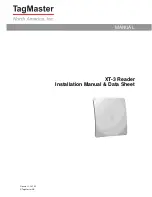
Gearless Lift Machine
WSG-S2.3
Operating Instructions
Seite/page
19
Datum/date
08.10.2013
Stand/version
0.8
Änderungen vorbehalten!
Subject to changes without notice!
7.6. Testing the brake system to EN81-1
Overload
• The brake system should be tested by interrupting the power supply to the motor and brake system with the
car moving downward at rated speed and 1.25 times the rated load. The brake system must be capable of
decelerating the car.
Failure of a brake
• If one brake fails, the brake system must still be capable of decelerating the car sufficiently during its down-
ward travel at rated load and rated speed.
• When simulating the failure of one brake, the other brakes must be kept open separately, even if the safety
circuit is open. This should be done using suitable electric circuitry or by hand.
• This state must not be maintained in the long term!
• Observe the lift during this test. If it does not decelerate, close the open brake circuit immediately.
Separate operation of the individual brakes
• The only method by which the partial brakes can be released separately is through electrical control. The
brakes can be activated/deactivated quickly using individual control buttons. (The connections for the indi-
vidual coils are accessible in the box.)
Monitoring the brakes
• Check the brake monitoring switches individually. No car travel must be permitted if a microswitch signal is
missing or a wrong signal operates.
The brake system should be tested with the car about halfway down the shaft. If any motor short-circuit
connections have been made, these should be deactivated so that the brake effect can be tested
independently.
7.5. Emergency evacuation
• The lift design engineer must always provide an electric return motion control or a manual rewinder (please
note EN 81-1 / 12.5.2).
• Should a failure occur with the car at rest, the car can be moved with the drive connected to the mains or, in
the case of mains failure, to an uninterruptible power supply (UPS), or mechanically under its own load with
the emergency brakes temporarily released.
• The brakes are released electrically either from the mains or using a UPS.
• If the brakes are released with the motor deenergised, the motor windings should be short-circuited. This
prevents the lift from accelerating in an uncontrolled manner, since the short-circuiting produces a speed-
dependent braking torque.
• In the special case of the car being caught by the safety device, it can be released by powering the drive from
the mains or a UPS.
• A remote manual releasing device ia available as an option.
















































